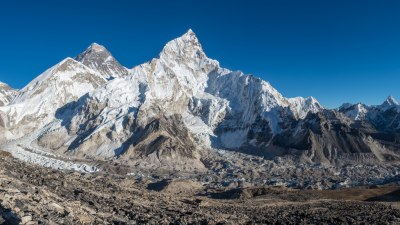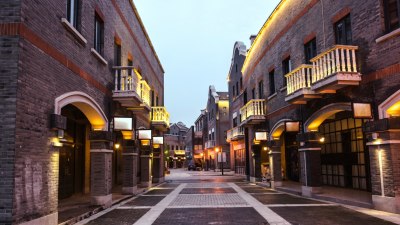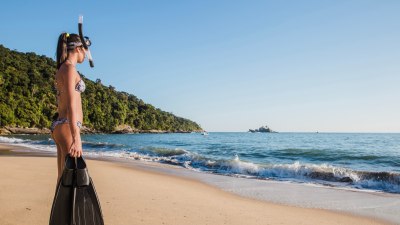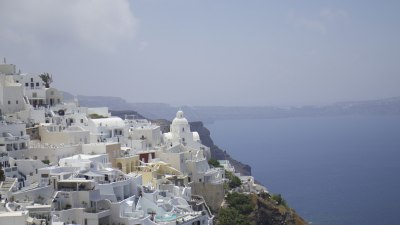The Best 11-Day Trek Through Nepal’s Annapurna Circuit
Explore the ultimate 11-day trekking adventure in Nepal's Annapurna Circuit, a journey through breathtaking landscapes.

The Annapurna Circuit is hailed as one of the best trekking routes in the world, offering trekkers an enriching experience filled with stunning vistas, diverse cultures, and unique landscapes. Stretching approximately 128 miles (206 kilometers) around the Annapurna Massif in Nepal, this trek provides a breathtaking journey through some of the highest passes and most picturesque villages accessible on foot. The trek generally requires at least 11 days to complete, ensuring you have ample time to acclimatize, explore, and soak in the surroundings.
In this article, we will delve into the intricacies of the Annapurna Circuit trek, including the best routes, essential preparations, tips for trekkers, and an estimation of what you can expect along the journey.
Getting Started: Preparing for the Trek
Preparation is crucial for a successful Annapurna Circuit trek. One of the first things you should consider is the best time to go. The best months to trek are generally from September to November and March to May, when the weather is most favorable. During these times, the trails are less likely to be affected by rain or snow, and the views are simply spectacular.
Next up is physical preparation. The trek can be strenuous with varying altitudes, so developing a fitness routine incorporating cardiovascular exercise and strength training is advisable. Aim for at least a few weeks of training before embarking on your journey. Familiarize yourself with the route and elevation changes, which will help you build the necessary stamina.
Your Gear Checklist
Investing in the right gear is vital for your comfort during the trek. Here’s a checklist of essentials you should bring:
- Durable trekking boots with good ankle support
- Weather-appropriate clothing (layering is key)
- A good quality sleeping bag rated for cold temperatures
- A reliable backpack with a rain cover
- Personal hygiene items and medications
- A water purification system
- Snacks and energy bars
The Itinerary: A Day-by-Day Breakdown
The typical itinerary for the 11-day trek generally unfolds as follows:
- Day 1: Kathmandu to Besishahar - Travel from Kathmandu to Besishahar, the starting point of your trek. Enjoy the scenic mountain views and lush landscapes along the way.
- Day 2: Besishahar to Chamje - Start your trek towards Chamje. The route offers stunning waterfalls and diverse flora.
- Day 3: Chamje to Dharapani - Trek through beautiful forests, terraced fields, and villages, finally reaching Dharapani.
- Day 4: Dharapani to Chame - Ascend to Chame, the administrative center of Manang district, surrounded by soaring peaks.
- Day 5: Chame to Pisang - Trek to Pisang, famous for its views of the Annapurna ranges.
- Day 6: Pisang to Manang - Proceed to Manang, known for its unique culture and breathtaking scenery.
- Day 7: Acclimatization Day in Manang - Spend the day in Manang to adjust to the altitude, explore the village, and hike to nearby viewpoints.
- Day 8: Manang to Yak Kharka - Trek towards Yak Kharka through alpine pastures and picturesque landscapes.
- Day 9: Yak Kharka to Thorong Phedi - Move to Thorong Phedi, the base for climbing Thorong La Pass.
- Day 10: Thorong Phedi to Thorong La Pass to Muktinath - An early start will see you conquer the Thorong La Pass, then descend to Muktinath, a sacred site.
- Day 11: Muktinath to Jomsom - Trek to Jomsom, enjoying more breathtaking views, where you can rest and reflect on your journey.
Highlights of the Trek
Throughout the Annapurna Circuit, trekkers are treated to a wide range of highlights:
- Beautiful Landscapes: The trek takes you through lush subtropical forests, arid deserts, and alpine meadows. Each day presents new breathtaking views.
- Cultural Diversity: The Annapurna Circuit is inhabited by a variety of ethnic groups, including Gurungs, Thakalis, and Tibetans, offering trekkers a rich cultural experience.
- Wildlife Sightings: Keep your eyes peeled for unique wildlife such as the Himalayan tahr and various bird species.
- High Altitude Passes: Crossing Thorong La Pass at 5,416 meters is a significant achievement, providing magnificent panoramic views.
- Historical Sites: Visit ancient monasteries and temples, particularly in Muktinath, where the spiritual significance is profound.
Tips for a Successful Trek
Here are some essential tips to ensure a seamless trekking experience:
- Stay Hydrated: Altitude sickness can be mitigated by drinking plenty of water. Consider bringing a refillable water bottle and purification tablets.
- Listen to Your Body: If you’re feeling unwell, it’s essential to take breaks and give your body the time it needs to acclimatize.
- Lighten Your Load: The lighter your backpack, the easier your trek will be. Only bring essentials and share items with trekking partners if possible.
- Respect Local Customs: Be mindful of cultural practices and always ask before taking photos of locals or their property.
- Plan for Connectivity: While trekking, phone service might be limited. Keep this in mind and plan accordingly.
The Annapurna Circuit is a trek that goes beyond just hiking; it’s an incredible journey that allows you to connect with nature and immerse yourself in the rich culture of Nepal. The diverse landscapes, the challenge of conquering high passes, and encounters with local communities make every moment of this trek worthwhile. By planning methodically and embracing both the adventure and the unforeseen challenges that come along, you’ll leave with memories that last a lifetime, plus a profound sense of accomplishment.
Whether you're a seasoned trekker or a novice adventurer, the Annapurna Circuit has something to offer everyone. So gather your gear, prepare those legs, and embark on an adventure that promises beauty, challenge, and exploration in one of the most stunning regions on Earth.











